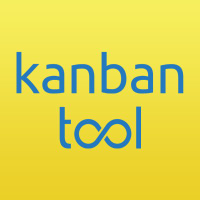
Kanban Tool
Visual project management tool with intuitive Kanban boards.
Asana, Inc.
Asana is a popular project management tool designed to help teams organize, track, and manage their work effectively. Built for agility, it provides a workspace where teams can visualize projects, delegate tasks, and ensure everything is on track. With its user-friendly interface and robust feature set, Asana serves as a powerful ally for teams looking to adopt agile methodologies.
One of Asana’s key features is its task management system, which allows users to create, assign, and track tasks with ease. Teams can prioritize work with due dates, set task dependencies, and even track progress using visual project timelines. This capability is particularly beneficial for businesses operating in fast-paced environments, ensuring that no task is overlooked and deadlines are met efficiently.
Moreover, Asana supports various project views, including list view, board view, timeline, and calendar, catering to diverse working styles. For instance, a marketing team can use board view to manage their content calendar, while a product development team might prefer a timeline view for their sprint planning. This flexibility helps teams customize their workflows to fit specific project needs and team dynamics.
Collaboration is streamlined in Asana through features like comments, mentions, and file attachments. Team members can leave feedback directly within tasks, ensuring context is maintained. For example, designers can share mockups within a task for instant feedback from stakeholders, speeding up the decision-making process. Additionally, integrations with tools like Slack and Google Drive enhance connectivity, allowing teams to work seamlessly across platforms.
Asana also offers robust reporting capabilities to keep teams aligned with project goals. With customizable dashboards and project milestones, leaders can track progress and make informed decisions quickly. Companies can utilize these insights to adapt strategies, such as reallocating resources to projects that are falling behind schedule.
Another significant advantage of using Asana is its scalability. Whether a team consists of five people or fifty, Asana can accommodate growth by allowing the addition of more workspaces and projects as needed. This adaptability makes it a preferred choice for both startups and large enterprises.
Security and compliance are also prioritized in Asana, with features such as data encryption and single sign-on (SSO) options. These ensure that sensitive information is protected, making it suitable even for organizations with stringent security requirements.
In summary, Asana stands out as an agile tool that enhances team collaboration and project visibility. Its comprehensive features, such as task management, reporting, and integrations with other platforms, make it an invaluable resource for any agile team aiming to improve workflows and project delivery.
Basic features for teams
This tool offers both free and paid plans. Check their website for detailed pricing information.
Asana provides comprehensive platform support across Web browsers, iOS devices, Android devices. This cross-platform availability ensures you can access and use the tool wherever you work, providing a seamless experience across all your devices.
Asana offers a flexible pricing structure with both free and paid plans to accommodate different needs and budgets.
Asana prioritizes security and data protection with a comprehensive set of features, including Single Sign-On, End-to-End Encryption, Audit Logs, Data Backup. The platform complies with major security standards and regulations, including GDPR (General Data Protection Regulation), CCPA (California Consumer Privacy Act).
Asana is specifically designed to meet the needs of startups, small businesses, enterprise organizations, freelance professionals, remote teams. The tool provides features and functionality specifically tailored to address the unique challenges and requirements of these user groups.
Asana offers several significant advantages, including user-friendly interface, customizable project views, real-time collaboration features, robust task management tools, detailed reporting and analytics, integrations with other software, scalability for different team sizes, strong security measures. However, potential users should consider some limitations, such as limited advanced features on free plan, can become overwhelming with large projects, search function could be more powerful, some users report a learning curve, mobile app lacks some desktop features, cost can be high for large teams, customization options can lead to complexity, notification settings may need fine-tuning.
Asana is built on and integrates with modern technologies including Node.js, React, Amazon Web Services (AWS), PostgreSQL. This robust technological foundation ensures reliable performance, scalability, and seamless integration capabilities.
Asana is versatile and can be used in various scenarios, including: Marketing campaign management, Product development tracking, Event planning coordination, Sales pipeline management, Remote team collaboration, Onboarding new employees, Website redesign projects, Content creation workflows, Customer support ticketing, Agile sprint planning. These use cases demonstrate the tool's flexibility and broad applicability across different business needs.
Asana was established in 2008 and is headquartered in San Francisco, USA. Since its inception, the platform has evolved and grown to become a trusted solution in its field.
Jobicy
578 professionals pay to access exclusive and experimental features on Jobicy
Free
USD $0/month
For people just getting started
Plus
USD $8/month
Everything in Free, and:
👎 👍
Using Asana? Share your experiences.